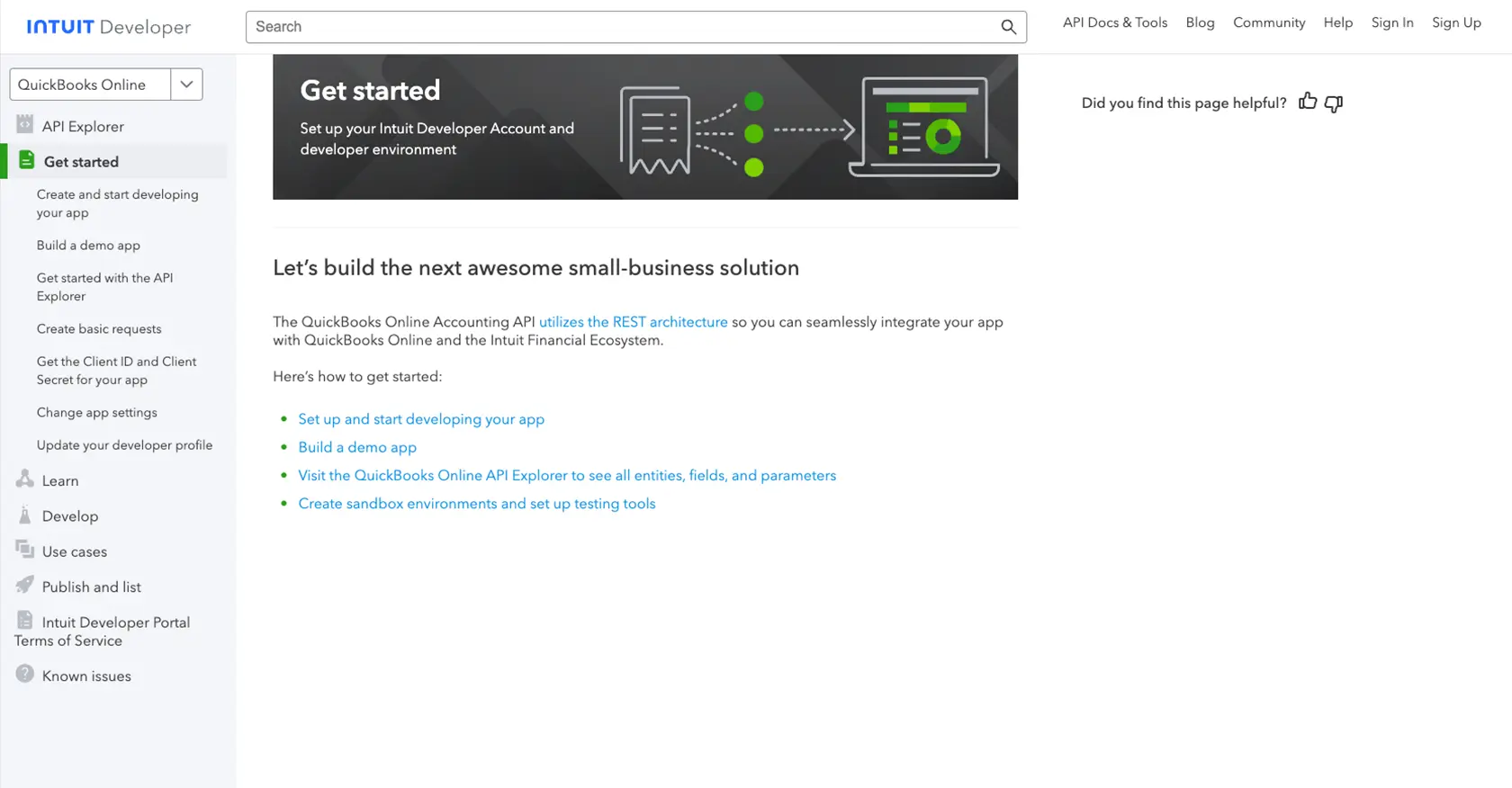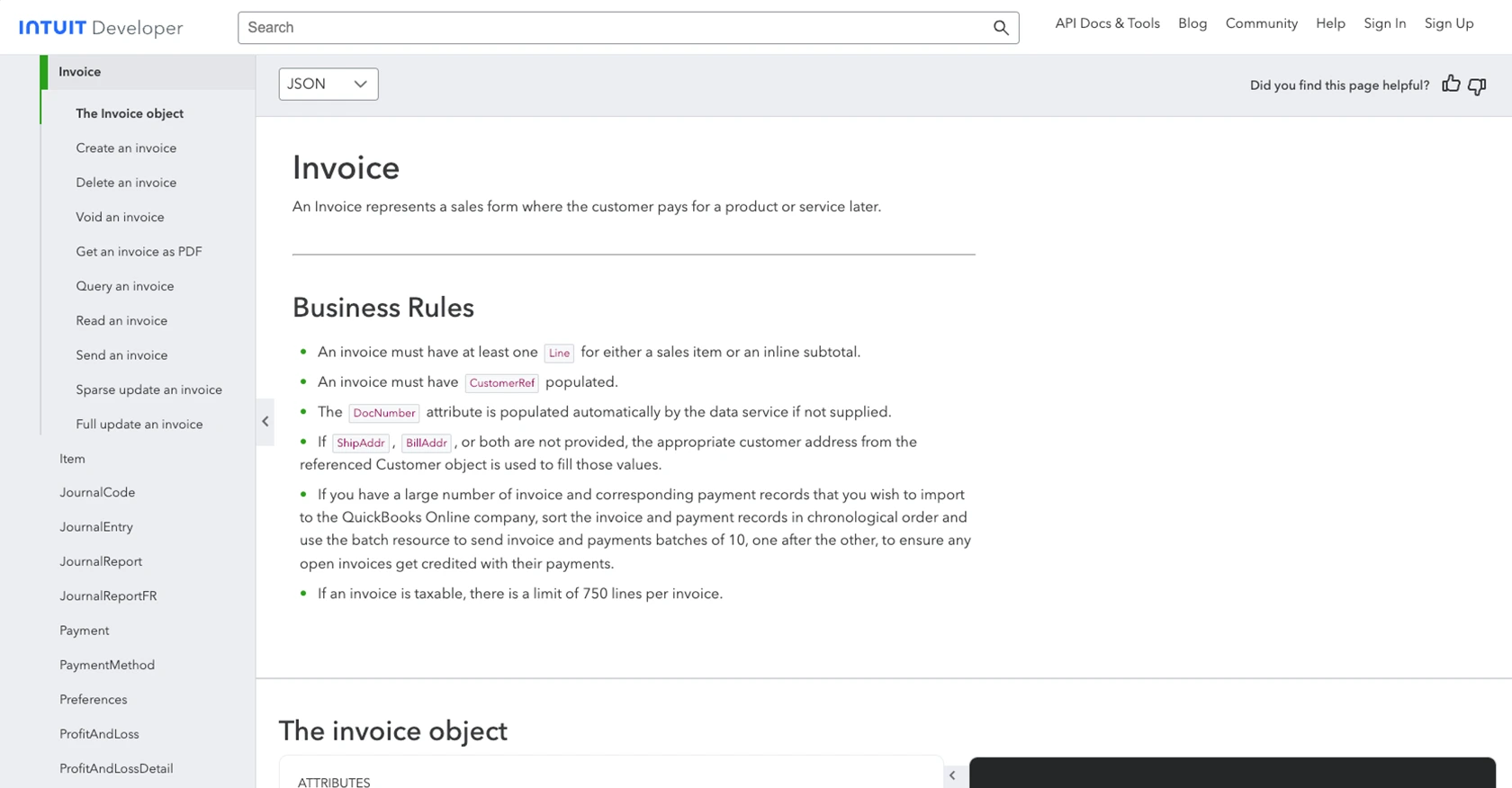Using the Quickbooks API to Get Invoices (with Python examples)

Introduction to QuickBooks API Integration
QuickBooks is a widely-used accounting software that offers comprehensive tools for managing financial operations, including invoicing, payroll, and expense tracking. It is a preferred choice for small to medium-sized businesses due to its user-friendly interface and robust functionality.
Integrating with the QuickBooks API allows developers to automate and streamline accounting tasks, such as retrieving invoice data. For example, a developer might use the QuickBooks API to automatically fetch and analyze invoice information, enabling real-time financial reporting and decision-making.
Setting Up Your QuickBooks Sandbox Account for API Integration
Before you can start using the QuickBooks API to retrieve invoices, you'll need to set up a QuickBooks sandbox account. This environment allows you to test your integration without affecting live data, providing a safe space to experiment and develop your application.
Creating a QuickBooks Developer Account
To begin, you'll need a QuickBooks Developer account. Follow these steps to create one:
- Visit the QuickBooks Developer Portal.
- Click on "Sign Up" to create a new account, or log in if you already have one.
- Fill in the required information and complete the registration process.
Setting Up a QuickBooks Sandbox Company
Once your developer account is ready, you can set up a sandbox company:
- Navigate to the "Sandbox" section in your QuickBooks Developer account.
- Select "Add Sandbox" to create a new sandbox company.
- Choose the type of company you want to simulate and complete the setup.
Creating a QuickBooks App for OAuth Authentication
To interact with the QuickBooks API, you'll need to create an app that uses OAuth for authentication:
- Go to the App Management section in your developer account.
- Click on "Create an App" and select "QuickBooks Online and Payments."
- Fill in the app details, including the name and description.
- Once the app is created, navigate to the "Keys & OAuth" tab to obtain your Client ID and Client Secret.
Configuring OAuth Scopes for QuickBooks API Access
To ensure your app has the necessary permissions, configure the OAuth scopes:
- In the "Keys & OAuth" tab, scroll down to the "Scopes" section.
- Select the scopes required for accessing invoices, such as "com.intuit.quickbooks.accounting."
- Save your changes to update the app settings.
With your QuickBooks sandbox account and app set up, you're now ready to start making API calls to retrieve invoice data. This setup ensures a secure and efficient development process, allowing you to test and refine your integration with QuickBooks.

sbb-itb-96038d7
Making API Calls to Retrieve Invoices from QuickBooks Using Python
To interact with the QuickBooks API and retrieve invoice data, you'll need to use Python, a versatile and widely-used programming language. This section will guide you through the process of setting up your Python environment, making the API call, and handling the response.
Setting Up Your Python Environment for QuickBooks API Integration
Before making API calls, ensure you have the following prerequisites installed on your machine:
- Python 3.11.1 or later
- The Python package installer, pip
Once you have these installed, open your terminal or command prompt and install the requests library, which is essential for making HTTP requests:
pip install requestsWriting Python Code to Fetch Invoices from QuickBooks API
Create a new Python file named get_quickbooks_invoices.py and add the following code:
import requests
# Set the API endpoint and headers
endpoint = "https://quickbooks.api.intuit.com/v3/company/YOUR_COMPANY_ID/query"
headers = {
"Authorization": "Bearer YOUR_ACCESS_TOKEN",
"Content-Type": "application/text"
}
# Define the query to fetch invoices
query = "SELECT * FROM Invoice"
# Make a POST request to the API
response = requests.post(endpoint, headers=headers, data=query)
# Check if the request was successful
if response.status_code == 200:
invoices = response.json()
for invoice in invoices['QueryResponse']['Invoice']:
print(invoice)
else:
print("Failed to retrieve invoices:", response.status_code, response.text)Replace YOUR_COMPANY_ID and YOUR_ACCESS_TOKEN with your actual QuickBooks company ID and access token obtained during the OAuth setup.
Running the Python Script and Verifying the Output
Run the script from your terminal or command line using the following command:
python get_quickbooks_invoices.pyIf successful, you should see a list of invoices printed in the console. This confirms that your API call was successful and that you have retrieved the invoice data from QuickBooks.
Handling Errors and Understanding QuickBooks API Response Codes
When making API calls, it's crucial to handle potential errors and understand the response codes. Here are some common HTTP status codes you might encounter:
- 200 OK: The request was successful, and the response contains the requested data.
- 400 Bad Request: The request was invalid. Check your query syntax and parameters.
- 401 Unauthorized: Authentication failed. Verify your access token and credentials.
- 403 Forbidden: You do not have permission to access the requested resource.
- 500 Internal Server Error: An error occurred on the server. Try again later.
For more detailed information on error codes, refer to the QuickBooks API documentation.

Conclusion and Best Practices for QuickBooks API Integration
Integrating with the QuickBooks API to retrieve invoices using Python can significantly enhance your financial management processes by automating data retrieval and analysis. However, to ensure a robust and secure integration, it's essential to follow best practices.
Storing QuickBooks API Credentials Securely
Always store your QuickBooks API credentials, such as the Client ID and Client Secret, securely. Use environment variables or secure vaults to prevent unauthorized access and ensure that sensitive information is not hard-coded in your application.
Handling QuickBooks API Rate Limits
QuickBooks API has rate limits that you must adhere to in order to avoid throttling. Monitor your API usage and implement retry logic with exponential backoff to handle rate limit errors gracefully. For specific rate limit details, refer to the QuickBooks API documentation.
Transforming and Standardizing Invoice Data
When retrieving invoice data, consider transforming and standardizing the data fields to match your application's requirements. This ensures consistency and facilitates easier data manipulation and reporting.
Streamlining Integrations with Endgrate
If managing multiple integrations is becoming cumbersome, consider using a tool like Endgrate. Endgrate allows you to build once for each use case and leverage a unified API endpoint for various platforms, including QuickBooks. This approach saves time and resources, enabling you to focus on your core product development.
By following these best practices and leveraging tools like Endgrate, you can create efficient and secure integrations with QuickBooks, enhancing your application's capabilities and providing a seamless experience for your users.
Read More
- https://endgrate.com/provider/quickbooks
- https://developer.intuit.com/app/developer/qbo/docs/get-started/start-developing-your-app
- https://developer.intuit.com/app/developer/qbo/docs/get-started/get-client-id-and-client-secret
- https://developer.intuit.com/app/developer/qbo/docs/get-started/app-settings
- https://developer.intuit.com/app/developer/qbo/docs/api/accounting/all-entities/invoice
Ready to get started?
